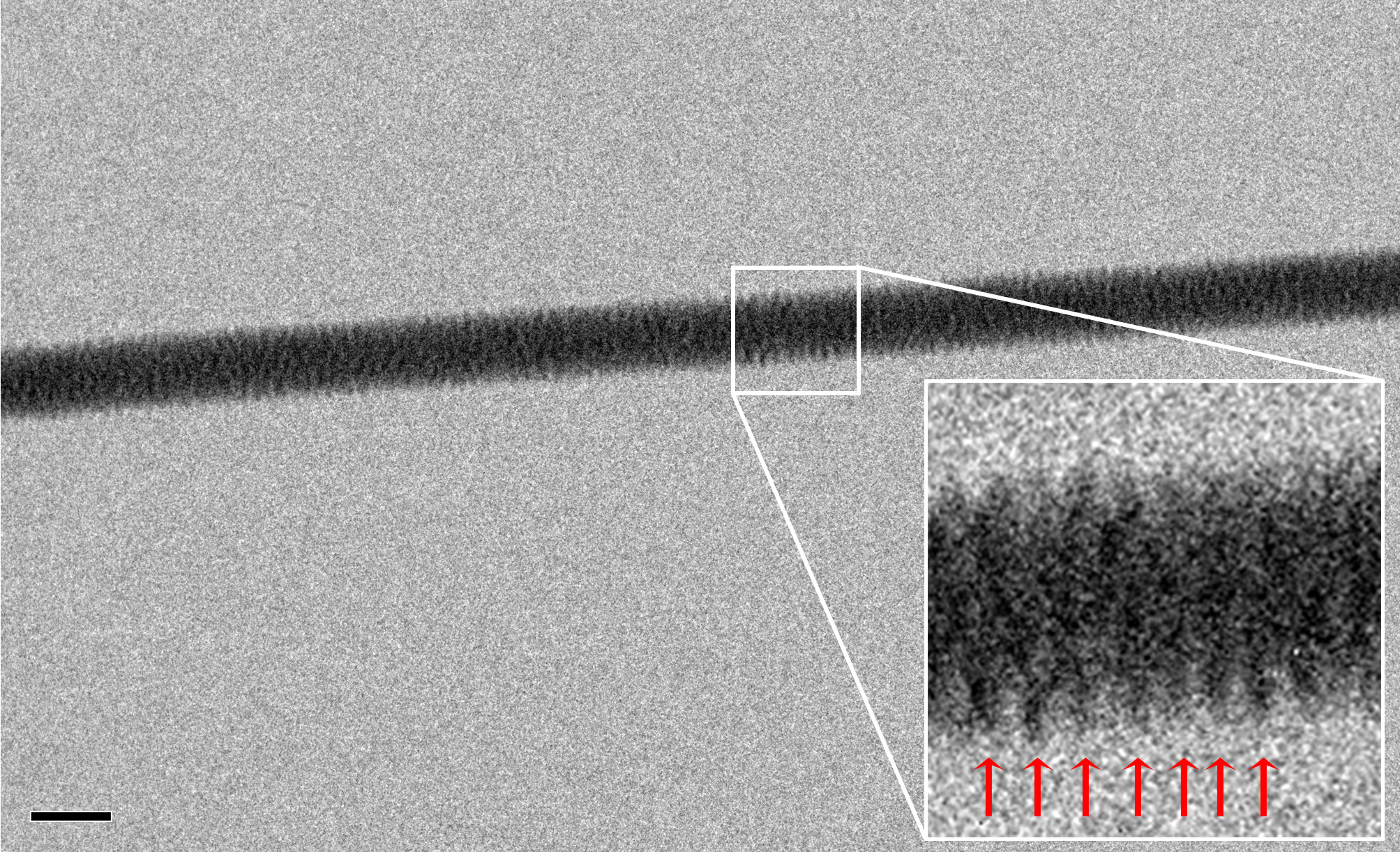DNA Directly Photographed for First Time

Fifty-nine years after James Watson and Francis Crick deduced the double-helix structure of DNA, a scientist has captured the first direct photograph of the twisted ladder that props up life.
Enzo Di Fabrizio, a physics professor at the Magna Graecia University in Catanzaro, Italy, snapped the picture using an electron microscope.
Previously, scientists had only seen DNA's structure indirectly. The double-corkscrew form was first discovered using a technique called X-ray crystallography, in which a material's shape is reconstructed based on how X-rays bounce after they collide with it.
But Di Fabrizio and his colleagues developed a plan to bring DNA out of hiding. They built a nanoscopic landscape of extremely water-repellant silicon pillars. When they added a solution that contained strands of DNA into this scene, the water quickly evaporated and left behind cords of bare DNA that stretched like tightropes between the tiny mesas.
They then shone beams of electrons through holes in the silicon bed, and captured high-resolution images of the illuminated molecules.
Di Fabrizio's images actually show a thread of several interwoven DNA molecules, as opposed to just two coupled strands. This is because the energy of the electrons used would be enough to destroy an isolated double helix, or a single strand from a double helix.
But with the use of more sensitive equipment and lower energy electrons, Di Fabrizio thinks that snapshots of individual double helices will soon be possible, reports New Scientist.
Get the world’s most fascinating discoveries delivered straight to your inbox.
Molecules of DNA, or deoxyribonucleic acid, store the genetic instructions that govern all living organisms' growth and function.
Di Fabrizio's innovation will allow scientists to vividly observe interactions between DNA and some of life's other essential ingredients, such as RNA (ribonucleic acid). The results of Di Fabrizio's work were published in the journal NanoLetters.
Follow Life's Little Mysteries on Twitter @llmysteries. We're also on Facebook & Google+.

